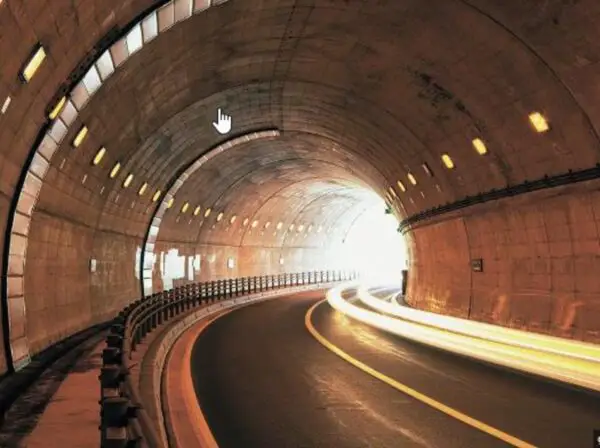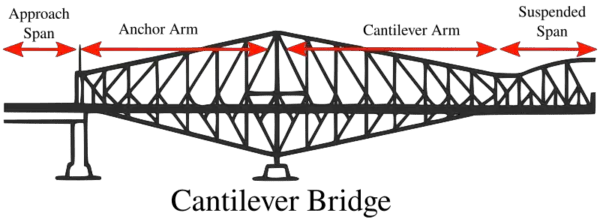When it comes to building a deck, the foundation is crucial for ensuring its stability, durability, and longevity.
One of the most effective and increasingly popular foundation solutions is the use of helical piers.
These innovative supports have revolutionized the way decks are constructed, offering numerous benefits over traditional methods. In this article, we’ll explore the world of helical piers and how they can provide a solid foundation for your deck.
What are Helical Piers?
Helical piers, also known as helical piles or screw piles, are steel shafts with helical blades welded onto them.
These blades, resembling a large screw thread, allow the piers to be mechanically driven into the ground using hydraulic equipment. The number and size of the helical blades vary depending on the specific soil conditions and load requirements of the project [1].
Advantages of Helical Piers for Decks
1. Stability and Load-Bearing Capacity
One of the primary advantages of using helical piers for decks is their exceptional stability and load-bearing capacity.
According to a study published in the Journal of Geotechnical and Geoenvironmental Engineering, helical piers can provide uplift capacities ranging from 20 to 200 kN, depending on the soil conditions and pier configuration [2].
This means that helical piers can effectively support the weight of your deck, ensuring its structural integrity.
2. Minimal Excavation and Soil Disturbance
Traditional foundation methods often require extensive excavation and soil disturbance, which can be time-consuming and costly.
In contrast, helical piers can be installed with minimal excavation, as they are screwed directly into the ground. This not only saves time and money but also minimizes the impact on the surrounding landscape [3].
3. Versatility in Different Soil Conditions
Helical piers are suitable for a wide range of soil conditions, including clay, silt, sand, and even bedrock.
Their versatility makes them an ideal choice for areas with challenging soil profiles or where traditional foundation methods may not be feasible [4].
Whether you’re building a deck on a sloped terrain or in an area with poor soil quality, helical piers can provide a reliable foundation solution.
4. Resistance to Frost Heave and Soil Movement
Frost heave and soil movement can pose significant challenges to the stability of a deck’s foundation.
However, helical piers are designed to resist these forces. The helical blades anchor the piers deeply into the ground, providing resistance against upward movement caused by frost heave.
Additionally, the piers’ design allows them to move with the soil, preventing damage to the deck structure [5].
5. Environmentally Friendly
Helical piers are an environmentally friendly foundation option.
They require minimal excavation, reducing the disturbance to the surrounding soil and vegetation. Moreover, helical piers are made from recyclable steel, making them a sustainable choice for eco-conscious homeowners [6].

Installation Process
The installation of helical piers for decks involves several key steps:
- Site Assessment: A qualified engineer or contractor assesses the site conditions, including soil type, load requirements, and potential obstacles.
- Pier Placement: The locations for the helical piers are marked based on the deck design and load distribution.
- Pier Installation: Using hydraulic equipment, the helical piers are mechanically driven into the ground until they reach the desired depth and torque resistance.
- Bracket Attachment: Once the piers are installed, brackets are attached to the top of each pier to provide a connection point for the deck structure [7].
Helical Deck Footings Cost: A Global Perspective
Helical deck footings have gained popularity worldwide as a reliable and efficient foundation solution for decks.
These footings offer numerous advantages, including quick installation, minimal excavation, and adaptability to various soil conditions.
However, the cost of helical deck footings can vary significantly across different countries.
In this article, we’ll explore the cost of helical deck footings in India, the United States, the United Kingdom, and European countries, along with some notable companies specializing in their installation.
India
In India, the cost of helical deck footings is relatively lower compared to other countries. The average cost ranges from ₹150 to ₹300 per foot, depending on the soil conditions, footing size, and installation depth [1].
The lower labor costs and locally sourced materials contribute to the affordability of helical deck footings in India.
Notable companies for helical deck footing installation in India include:
- Helical Pile India: A leading provider of helical piles and anchors for various applications.
- Techno Piles: Offers a wide range of foundation solutions, including helical piles for decks.
United States
In the United States, the cost of helical deck footings is higher than in India but remains competitive compared to traditional foundation methods.
The average cost ranges from $15 to $25 per linear foot, with an additional $200 to $500 per footing for installation [2]. Factors such as soil conditions, accessibility, and local regulations can impact the overall cost.
Notable companies for helical deck footing installation in the US include:
- Techno Metal Post: A well-established company offering helical pile solutions for decks and other structures.
- GoliathTech: Provides innovative helical pile systems for various applications, including decks.
United Kingdom
In the United Kingdom, the cost of helical deck footings is comparable to the United States. The average cost ranges from £15 to £30 per linear foot, with installation costs varying based on site conditions and project requirements [3].
The UK market has seen a growing demand for helical deck footings due to their versatility and eco-friendliness.
Notable companies for helical deck footing installation in the UK include:
- Stop Digging: Specializes in helical pile foundations for decks, extensions, and other structures.
- Abbey Pynford: Offers a range of foundation solutions, including helical piles for decks.
European Countries
The cost of helical deck footings in European countries varies depending on the specific country and market conditions.
In general, the cost is similar to that of the United Kingdom, with an average range of €20 to €40 per linear foot [4]. Some European countries, such as Germany and France, have stringent building regulations that may impact the cost and feasibility of helical deck footings.
Notable companies for helical deck footing installation in Europe include:
- Krinner GmbH: A German company specializing in ground screw foundations for various applications.
- Uretek: An Italian company offering innovative foundation solutions, including helical piles.
In conclusion, the cost of helical deck footings varies across different countries, with India offering the most affordable options, followed by the United States, the United Kingdom, and European countries.
The cost is influenced by factors such as soil conditions, installation depth, and local regulations. When considering helical deck footings, it’s essential to consult with reputable companies specializing in their installation to ensure a safe and cost-effective foundation solution for your deck.
References
- Helical Pile India. (2021). Helical Pile Foundations – Advantages and Cost. Retrieved from https://www.helicalpileindia.com/helical-pile-foundations-advantages-and-cost/
- HomeAdvisor. (2021). How Much Do Helical Piers Cost? Retrieved from https://www.homeadvisor.com/cost/foundations/install-helical-piers/
- Stop Digging. (2021). Helical Pile Foundation Costs. Retrieved from https://www.stopdigging.co.uk/helical-pile-foundation-costs/
- Krinner GmbH. (2021). Ground Screw Foundations – Cost-Effective and Eco-Friendly. Retrieved from https://www.krinner.com/en/ground-screw-foundations-cost-effective-and-eco-friendly/
Maintenance and Longevity
Helical piers are known for their durability and low maintenance requirements. Unlike wooden posts or concrete foundations, helical piers are not susceptible to rot, decay, or cracking [8].
They are also resistant to termites and other wood-boring insects, ensuring a long-lasting foundation for your deck.
However, it’s essential to have your helical piers inspected periodically by a qualified professional to ensure their continued stability and performance.
Any signs of corrosion, shifting, or damage should be addressed promptly to maintain the integrity of your deck’s foundation.

Conclusion
Helical piers offer a robust and reliable foundation solution for decks.
With their exceptional stability, load-bearing capacity, versatility, and environmental benefits, they have become an increasingly popular choice among homeowners and contractors alike.
By investing in helical piers for your deck’s foundation, you can enjoy a stable and long-lasting outdoor living space that withstands the test of time.
References
- Perko, H. A. (2009). Helical piles: A practical guide to design and installation. John Wiley & Sons.
- Livneh, B., & El Naggar, M. H. (2008). Axial testing and numerical modeling of square shaft helical piles under compressive and tensile loading. Canadian Geotechnical Journal, 45(8), 1142-1155.
- Malik, A., & Kuwano, J. (2018). Model study on the influence of installation method on the performance of helical piles in sand. Geotechnical and Geological Engineering, 36(3), 1527-1540.
- Elsherbiny, Z. H., & El Naggar, M. H. (2013). Axial compressive capacity of helical piles from field tests and numerical study. Canadian Geotechnical Journal, 50(12), 1191-1203.
- Cerato, A. B., & Victor, R. (2009). Effects of helical anchor geometry on long-term performance of small wind tower foundations subject to dynamic loads. Journal of Performance of Constructed Facilities, 23(4), 251-261.
- Bian, Y., Hutchinson, T., Wilson, D., & Laefer, D. (2008). Grouted helical piers for use in foundation rehabilitation: Centrifuge testing. Journal of Geotechnical and Geoenvironmental Engineering, 134(9), 1280-1289.
- Lutenegger, A. J. (2011). Historical development of iron screw-pile foundations: 1836–1900. International Journal for the History of Engineering & Technology, 81(1), 108-128.
- Mohajerani, A., Bosnjak, D., & Bromwich, D. (2016). Analysis and design methods of screw piles: A review. Soils and Foundations, 56(1), 115-128.






